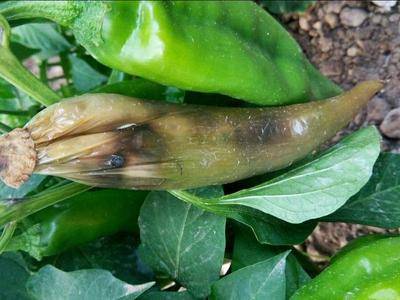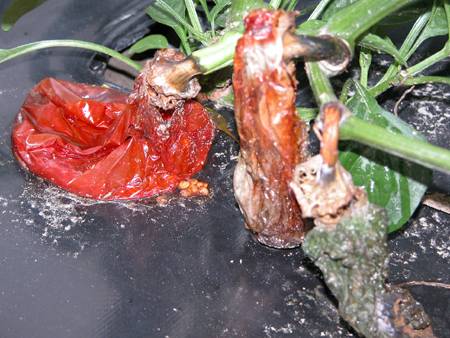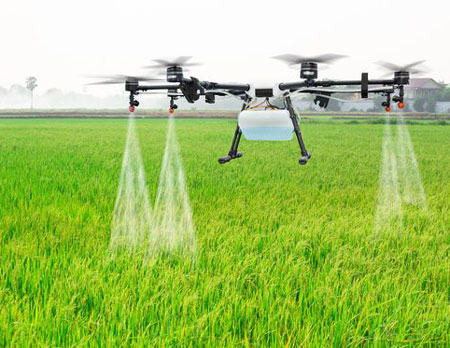Chilli
Bacterial Soft Rot

Erwinia carotovora subsp. Carotovora
Bacterial Disease

Erwinia carotovora subsp. Carotovora
Bacterial Disease
Bacterial Soft Rot in Pepper
Introduction: Bacterial soft rot in pepper is a destructive disease caused by bacteria from at least five genera, including Erwinia, Pseudomonas, Bacillus, Xanthomonas, and Cytophaga. Among these, the most aggressive pathogens are Erwinia carotovora subsp. carotovora and E. chrysanthemi. This disease is characterized by rapid fruit deterioration, causing significant economic losses.
Key Points:
-
Causal Organisms:
-
Genera involved: Erwinia, Pseudomonas, Bacillus, Xanthomonas, and Cytophaga.
-
Most aggressive species: Erwinia carotovora subsp. carotovora and E. chrysanthemi.
-
-
Symptoms:
-
Initial water-soaked lesions on the fruit.
-
Rapid spread leading to slimy, foul-smelling fruit masses.
-
Deterioration due to cellulolytic and pectolytic enzyme activity.
-
-
Environmental Factors:
-
Warm, moist weather highly favorable for infection.
-
Bacteria present in surface water, soil, and the rhizosphere.
-
-
Spread and Transmission:
-
Human activities such as pruning and propagation.
-
Movement of soil and debris by machinery or foot traffic.
-
Overhead irrigation and application of pesticides under pressure.
-
-
Mode of Infection:
-
Cannot penetrate intact fruit surfaces.
-
Enters through wounds, insect stings, and sunscald.
-
Peduncle and lobed calyx are common points of initial attack.
-
-
Contributing Factors:
-
Moist conditions increase susceptibility.
-
Excess nitrogen fertilization linked to higher vulnerability.
-
Conclusion: Effective management of bacterial soft rot in pepper requires minimizing plant injuries, regulating nitrogen fertilization, and maintaining good field sanitation. Controlling moisture levels and adopting proper handling practices can significantly reduce the incidence of this economically damaging disease.




